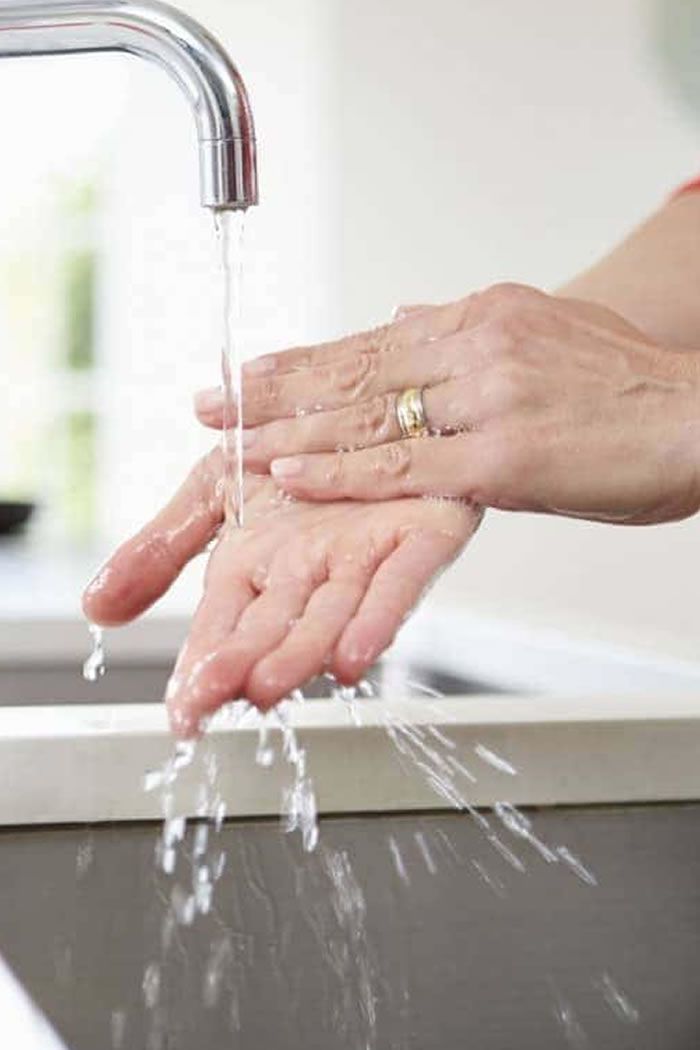Having a germ-free kitchen is important for healthy living. Because we eat or prepare food in our kitchen, we should keep it clean at all times. Food prepared in an unsanitary kitchen can lead to food poisoning, spread of infectious disease, and even death.

Here I will discuss some super-simple, easy tips on how to keep your kitchen germ-free.
Regular cleaning
Regular cleaning is the first step towards a germ-free kitchen. One great way is to use commercial products that can effectively clean and disinfect surfaces. Before using any cleaning product, make sure to read the instructions on the packaging. You should also consider the after-effects of using these products. Check out MSDS (Material Safety Data Sheet) which you can find on the manufacturer’s website. Make sure to thoroughly wipe up disinfectants, and don’t place food on cleaned surfaces immediately after using disinfectants because they might be absorbed by these foods. Aside from the counter tops, also clean and disinfect the floor, cabinets, dining table, etc.
Consider organic disinfectants.
One might consider using lemon juice as a disinfectant. Lemon juice is a natural germ killer and a preferable choice for those who would like the strength of a germ-killing agent while having the advantage of a natural one. Lemon juice has an acidic germ-killing action while leaving a fresh scent. It can be directly applied to any kitchen surface or you can squeeze the juice from three medium-sized lemons into a bowl. You can also wash some selected kitchen appliances or surfaces with soap and water, rinse, and sanitize with the lemon juice. If you have an outdoor kitchen you may consider using a ryobi electric pressure washer for deck combined with detergent or disinfectant. It will ensure deep cleaning and effective removal of disinfectant residues and germs.
Replace sponges regularly.
There is a “germ magnet” in the kitchen: the sponge. It absorbs germs during regular use, and provides “room and board” for germ colonies. For this reason it should be sanitized after use and replaced regularly.
Steam cleaning
Steam cleaning is another way to clean and sanitize your kitchen. Whereas many cleaning products may not be safe to use in food preparation areas due to harmful chemicals, steam cleaning (where pure water is heated to steam) is an easy way to kill germs in places you might not usually be able to clean. Hot steam delivers a lot of energy to disinfect germs, penetrate bacterial bio film, and dislodge dirt from tiny crevices in the grout between the tiles on the floor. There are many ways to clean grout like a pro but the steam option is the best one for ceramic or stone tiled floors. Consider this option if your kitchen has a tiled floor, counters, or backsplashes.
Clean the inside of your microwave and refrigerator
Clean your appliances such as microwave and refrigerator at least once a week, as well as those in your outdoor kitchen like the best portable grill you recently bought. These appliances may come into direct contact with your food, hence it is necessary to maintain cleanliness.
Storing raw foods
Storing uncooked foods correctly is another way to diminish germs in your kitchen. All raw foods are the most susceptible to harmful germs that can cause food-related sickness, so handling them with care is important. Keep raw meats wrapped tightly and stored away from fruits and vegetables. Thaw frozen meats in containers that will not leak. Do not refreeze meat once it has been thawed.
Food prepared in an unsanitary kitchen can lead to food poisoning, spread of infectious disease, and even death.



